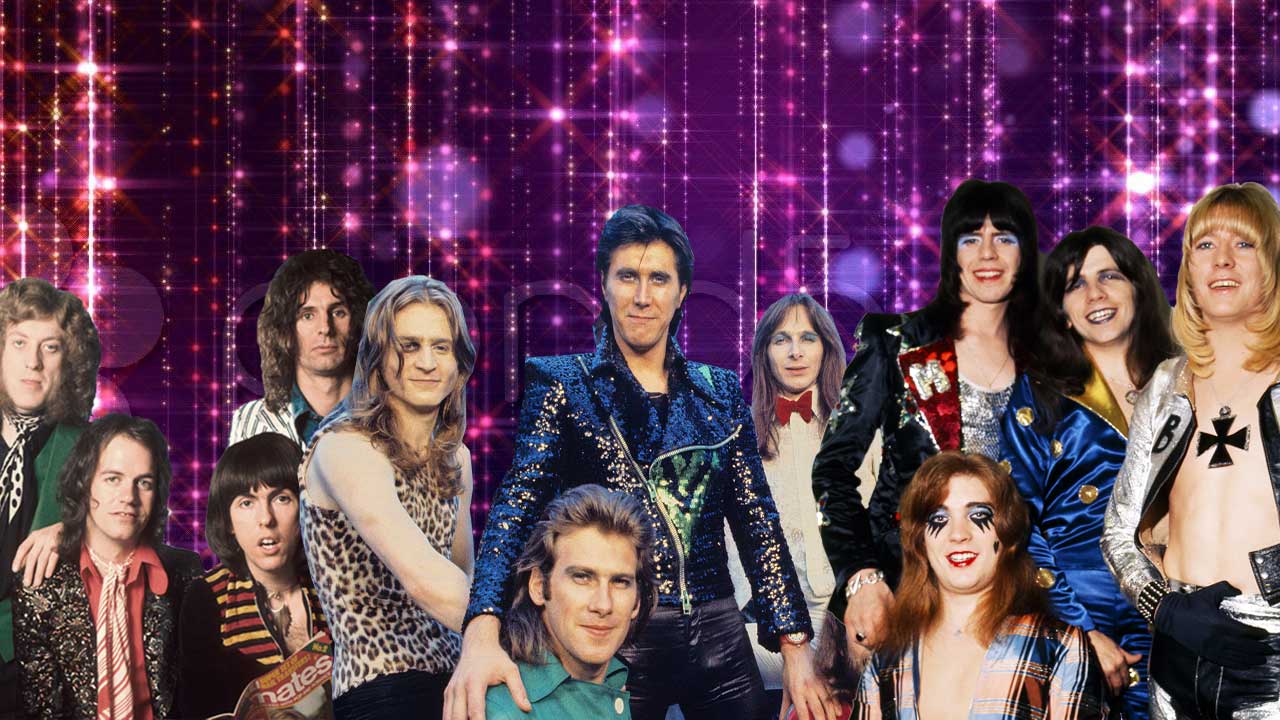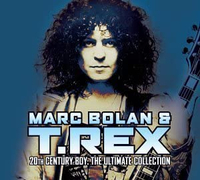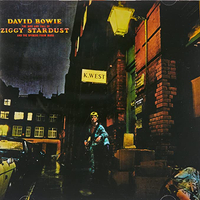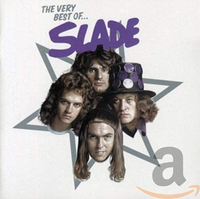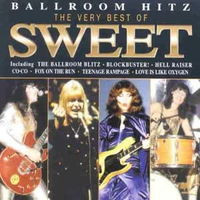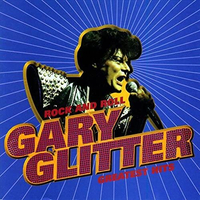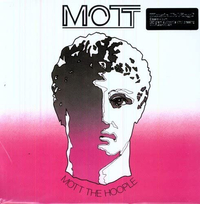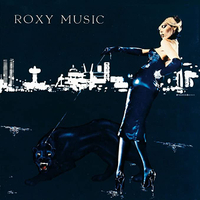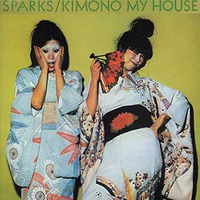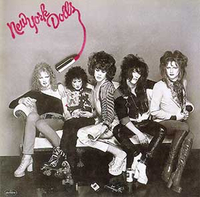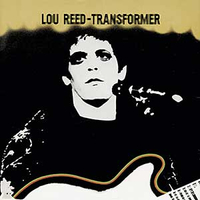Glam rock was an inevitable reaction to one of the most austere periods in rock history. In 1971, drab denim-clad singer-songwriters proliferated, their dreary, introspective whimsy symptomatic of a post-60s comedown that gripped a generation.
Altamont, Manson, Vietnam and The Beatles’ acrimonious demise hung over proceedings like a dark cloud. Hippy chic gave way to widows’ weeds. But memories are short in the pop marketplace and a whole new generation of teens were clamouring for a new kind of kick.
Glam was an ephemeral slice of quintessentially English innocence – it provided excitement and delicious vacuous fun, and kept fledgling punks amused while waiting for their manifest destiny.
It was more about singles than albums – hence the odd collection that follows – and way more about throwaway pop than heavyweight rock (so no wolves in sheep’s clothing like Alice Cooper, Queen and Kiss here). But that doesn’t make it any less brilliant.

T.Rex - 20th Century Boy: The Ultimate Collection (2002)
Marc Bolan never truly escaped the perplexing hippy gumbo of his Hobbit-obsessed acoustic days, so T.Rex albums were often peppered with unwelcome throwbacks to pre-electric lyrical gobbledegook. But this is the only album you’ll ever need.
This is Bolan at his most seductive, concise and irresistible: Hot Love, Get It On, Jeepster, Telegram Sam, Children Of The Revolution, Solid Gold Easy Action, 20th Century Boy; an unbroken run of faultless, sex-charged, top five singles that provided the 1970s pop landscape with its first true superstar. Suddenly The Beatles split didn’t seem so bad after all.
David Bowie - Ziggy Stardust (1972)
Of course when David Bowie first exploded across the nation’s TV screens in the summer of ’72 nobody realised that the orange cox-combed alien apparition that gazed into their living rooms through unevenly matched eyeballs was simply some bloke from Brixton playing the part of a charismatic intergalactic superstar of no fixed gender.
On hearing Ziggy Stardust it was even harder to believe. This was a genius album, an effortless concept piece split into perfectly formed, entrancing vignettes. From the evocative Five Years to the anthemic Rock’N’Roll Suicide, Ziggy Stardust is as affecting today as it ever was.
Slade - The Very Best Of (2005)
Journeyman Wolverhampton rockers Slade weren’t so much catwalk glam as terraces garish. The band first adopted street-level football fan chic in 1969 by aping the then-popular skinhead cult (crops, boots and braces), and by ’72, they had metamorphosed into fully-fledged super yobs.
Slade mischievously misspelled song titles, added stomping boots to their hook-laden approximation of rabble-rousing, Lennon-fronted Beatles, and stole every episode of Top Of The Pops they appeared on. Delving into Slade’s albums will reap rich rewards, but it’s their singles you really need, all of which are on here.
Bubblegum impresarios Nicky Chinn and Mike Chapman’s decision to mould the Sweet into a money-spinning pantomime hybrid of glam-pop camp and lightweight, melody-driven rock might have frustrated the band’s pretensions to metal integrity. But by God, they were good!
Chinn and Chapman were the unofficial laureates of glam, who found ultimate form in the string of hits they wrote for the Sweet: Blockbuster, Hell Raiser, The Ballroom Blitz and Teenage Rampage – the above collection totalling glam rock perfection, while über-camp bassist Steve Priest’s trademark mid-song ejaculations defined the genre.
Gary Glitter - Rock And Roll: Gary Glitter’s Greatest Hits (1990)
A controversial choice, obviously, but to ignore one of the glam scene’s most successful exponents would be like ignoring a foil-wrapped gorilla loose in your parlour. In the light of subsequent, odious revelations it’s easy to forget how captivated the pop world once was by this ageing cabaret queen with his forever–surprised expression.
While all that glitters isn’t gold, Glitter’s singles invariably were. Two drummers and echo-drenched production gave ‘the man who put the bang in gang’ a string of top five hits, but do we want to touch him? Nope.
More proof, if it were needed, that glam was less about blurred gender lines than it was about alpha male bruisers in blouses of convenience. Like Slade, Mott The Hoople were archetypal lad rockers – their version of Bowie’s All The Young Dudes got more young thugs to exchange clouting for pouting than even Ziggy Stardust.
But it was on their next album that they nailed a signature sound as quintessentially 70s as the smell of Brut. Chuck Berry in a blender with Biba drag and Watney’s Red Barrel forged glam classics like All The Way from Memphis and Honaloochie Boogie.
Roxy Music - For Your Pleasure (1973)
In terms of packaging, Roxy Music’s suave European futurism was glam incarnate. If you’re looking for a single image to accompany glam’s encyclopedic entry then look no further than For Your Pleasure’s inner sleeve. Bryan Ferry’s bolero Elvis; Andy MacKay’s green-flecked quiff; Eno’s space age lady-boy… here, at last, was an album that looked exactly like it sounded.
A million stylistic miles from the sluttiness of their contemporaries, Roxy offered sophistication, ennui and lounge lizard languor. No proletarian foot-stomping on In Every Dream Home A Heartache, just casual, alienated, impenetrable cool.
Sparks - Kimono My House (1974)
With an image contrived from purest eccentricity, the musical anomaly that was Sparks were ideal constituents for the glam rock collective. LA brothers Russell and Ron Mael fashioned a bubbly and camp musical style not entirely dissimilar to that of Roxy Music. But it was Sparks’ unconventional image that truly captured the national imagination.
While vocalist Russell vamped for his life with cherubic curls and a daunting falsetto, elder brother Ron played a quizzical Hitler on keyboards. This Town Ain’t Big Enough For The Both Of Us and Amateur Hour became glam staples and, incredibly, they’re still at it.
New York Dolls - New York Dolls (1973)
While there was something inherently loveable about British glam with its provincial cheesiness and tubby, everyman exponents, on crossing the Atlantic it gained a menace that effectively rendered it unsaleable in the UK.
The New York Dolls didn’t look like regular guys who’d raided their sister’s makeup bag for a lark, they looked like switchblade-toting transsexual hookers on smack. They courted controversy and made swaggering proto-punk records that nobody bought who didn’t go on to form a band. New York Dolls provides a dark flipside to glam naivete and a direct link to rock’s imminent future.
As the Velvet Underground were mainly responsible for Bowie’s transformation from fey, folky Tony into space-age rock god, Bowie gave Lou a career-saving glam make over. Bowie’s production and Ronson’s arrangements brought contemporary clout to Vicious and Satellite Of Love, but it was Lou Reed’s worldly-wise pen portraits like Walk On The Wild Side that made Transformer an essential glam touchstone.
Like the New York Dolls, Lou’s Manhattan glam exchanged the UK scene’s parochial innocence for harsh urban reality, thus sowing the seeds of punk; seeds that would ultimately seal glam rock’s fate.
